What’s Included?
Prerequisites
- Completion of MB-800T00: Microsoft Dynamics 365 Business Central Functional Consultant
- Solid understanding of basic programming concepts
- Familiarity with Visual Studio Code and Git recommended
Skills You’ll Gain
- Extension Customization
- Object Development
- DevOps Integration
- Workflow Automation
- API Development
- App Deployment
- Security Design
- Performance Optimization
Self Study Materials Included
Videos
Engaging visual content to enhance understanding and learning experience.
Podcasts
Insightful audio sessions featuring expert discussions and real-world cases.
Audiobooks
Listen and learn anytime with convenient audio-based knowledge sharing.
E-Books
Comprehensive digital guides offering in-depth knowledge and learning support.
Module Wise Quizzes
Interactive assessments to reinforce learning and test conceptual clarity.
Additional Resources
Supplementary references and list of tools to deepen knowledge and practical application.
Tools You’ll Master
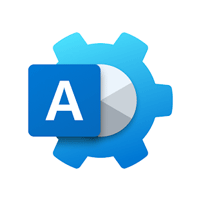
Microsoft 365 Admin Center
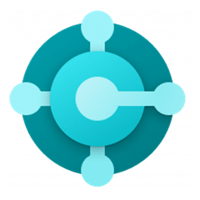
Microsoft Dynamics 365 Business Central
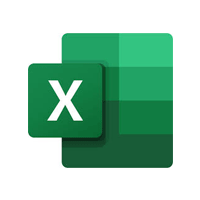
Microsoft Excel

Outlook

Power Automate

Power Bl
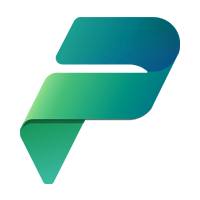
Power Platform
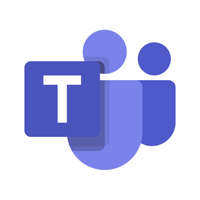
Teams

Visual Studio Code
What You’ll Learn
Develop Extensions with AL
Create and customize Business Central extensions using AL in Visual Studio Code.
Work with Core Application Objects
Build and modify pages, reports, codeunits, and tables.
Implement Source Control and CI/CD
Use Git and Azure DevOps for versioning and automated deployments.
Automate Workflows
Integrate Power Automate to streamline business processes.
Course Modules
Lesson 1: Get Started with Microsoft Dynamics 365 Business Central
Module 1.1: Start your free Dynamics 365 Business Central trial
Module 1.2: Introduction to the capabilities of Microsoft Dynamics 365 Business Central
Module 1.3: Customize Microsoft Dynamics 365 Business Central
Lesson 2: Use Application Development Best Practices in Business Central
Module 2.1: Introduction to application types in Business Central
Module 2.2: Understand the process of bringing an app to AppSource
Module 2.3: Consider application monetization responsibilities
Module 2.4: Implement SaaSification techniques
Module 2.5: Prepare for easy application upgrade experiences
Module 2.6: Learn about application performance and monitoring
Module 2.7: Implement test automation techniques
Lesson 3: Deploy and Configure Microsoft Dynamics 365 Business Central
Module 3.1: Administer Business Central online
Module 3.2: Create new companies in Business Central
Module 3.3: Migrate data to Business Central
Module 3.4: Migrate on-premises data
Module 3.5: Manage users and implement security
Module 3.6: Set up email in Business Central
Module 3.7: Integrate Business Central with Outlook
Module 3.8: Integrate Business Central with Teams
Module 3.9: Create workflows
Module 3.10: Use approval workflows
Lesson 4: Discover the Foundation of Customizing Business Central
Module 4.1: Introduction to the development environment
Module 4.2: Work with tables
Module 4.3: Extend and modify existing tables
Module 4.4: Work with pages
Module 4.5: Extend and modify existing pages
Module 4.6: Work with entitlements and permission sets
Module 4.7: Integrate with Dataverse
Module 4.8: Debug and deploy extensions
Lesson 5: Build Reports for Microsoft Dynamics 365 Business Central
Module 5.1: Introduction to report components
Module 5.2: Use the report design process
Module 5.3: Design the data model of a report
Module 5.4: Add a layout to a report
Module 5.5: Complete the report request page
Module 5.6: Add reports to Tell Me and substitute reports
Module 5.7: Use report triggers, functions, and processing-only reports
Module 5.8: Implement multilingual reports
Module 5.9: Work with reports
Module 5.10: Analyze list data using data analysis mode
Module 5.11: Extend reports
Lesson 6: Learn AL Programming for Business Central
Module 6.1: Introduction to AL programming
Module 6.2: Learn AL statements
Module 6.3: Work with AL built-in functions
Module 6.4: Handle errors with AL
Module 6.5: Create custom procedures
Module 6.6: Work with codeunits
Module 6.7: Use events and triggers
Module 6.8: Implement interfaces
Module 6.9: Manipulate data using AL code
Module 6.10: Manage multilanguage development
Lesson 7: Learn Data Management Foundation
Module 7.1: Introduction to file management
Module 7.2: Work with XMLports
Module 7.3: Work with queries
Lesson 8: Interface with Microsoft Dynamics 365 Business Central
Module 8.1: Work with web services
Module 8.2: Work with APIs
Module 8.3: Access REST services from within Business Central
Module 8.4: Use Azure Functions
Module 8.5: Build control add-in objects
Module 8.6: Use AL-controlled barcode scanning
Lesson 9: Tailor Roles and Design the UI
Module 9.1: Set up onboarding experiences
Module 9.2: Develop a Role Center
Module 9.3: Build an Assisted Setup
Module 9.4: Send notifications
Module 9.5: Customize the UI experience
Lesson 10: Work with Essential Development Standards
Module 10.1: Identify functional table types and characteristics
Module 10.2: Implement the data process model
Module 10.3: Work with master data
Module 10.4: Use document standards
Lesson 11: Continuous Integration with Azure DevOps
Module 11.1: Use Application Lifecycle Management
Module 11.2: Use Git source control in Visual Studio Code
Module 11.3: Use branching and merging with Git
Module 11.4: Use Docker in development
Module 11.5: Introduction to test automation
Module 11.6: Use Azure Pipelines for CI/CD
Module 11.7: Work with Azure Boards for project management
Lesson 12: Develop Using Power Apps and Power Automate
Module 12.1: Introduction to Power Platform and Business Central
Module 12.2: Create a canvas app based on Business Central data
Module 12.3: Use Power Automate with Business Central
Module 12.4: Use model-driven apps and Dataverse with Business Central
Module 12.5: Create a custom connector to extend Power Platform functionalities
Frequently Asked Questions
Developers, technical architects, and consultants working with Business Central, Power Platform, or ERP customizations.
Yes, basic programming knowledge and prior experience with Business Central is expected.
Yes, it prepares you for the MB-820: Microsoft Dynamics 365 Business Central Developer exam.
You can attend it live online with an instructor or study at your own pace.